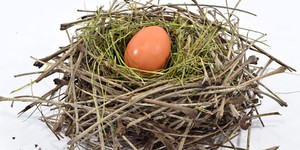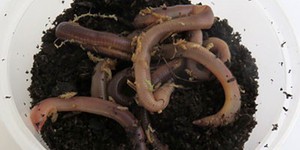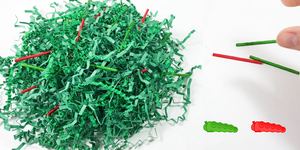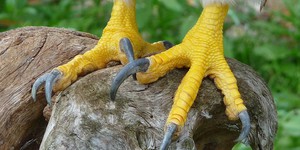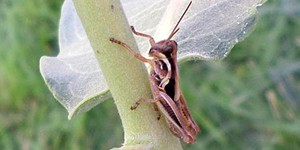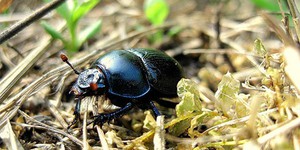Zoology STEM Activities for Kids (15 results)
Animals have developed an amazing variety of body plans, behaviors, and strategies in order to succeed in the struggle for survival. Explore topics ranging from regeneration, camouflage, animal migration, how to attract hummingbirds, and more.
|
Select a resource
Sort by
|
STEM Activity
62 reviews
Have you ever wondered how predators, like wolves, lions, and hawks, are able to find their prey? And what can an animal do to stay off of a hunter's menu? To survive, some animals have developed specific camouflage tactics to fool their predators. One strategy some animals use is to look very similar to other animals that are poisonous or that the predator doesn't like to eat. This camouflage tactic is called mimicry. In this science activity, you will be the hungry predator and you will hunt…
Read more
STEM Activity
37 reviews
Different types of birds lay their eggs in different places. Some build tiny nests in bushes, some build enormous nests in tall trees. Some lay their eggs directly on the ground or on rocky ledges. Those that build nests use many different types of materials. In this project you will try to build your own bird nest using only natural materials that you can find outside. Can you do better than a bird?
Read more
STEM Activity
17 reviews
Did you know that there are about 10,000 different types of birds in the world? You don't have to go far to see some of them. Birds live outside in backyards and parks and can even be found in a busy city! Do you know what kinds of birds live in your neighborhood? Have you ever taken a close look at the birds you see in your backyard to identify them and observe their behavior? In this activity, you will build a bird feeder to attract birds, so you can study them.
Read more
Featured
STEM Activity
60 reviews
Did you know that the seaweed you've seen in the ocean or even eaten as a snack is inspiring innovators to imagine new materials? Large
brown algae, like kelp, contains polymers—long chains of molecules—that are more environmentally friendly than the ones in most plastics. These natural polymers (alginates) could eventually be used to create sustainable everyday objects. Try your hand at using a bit of chemistry to turn biodegradable polymers from algae into your own custom…
Read more
STEM Activity
16 reviews
Earthworms are important for the soil and a lot of fun to study. Few people know there are over 2,000 types of earthworms. Some like to burrow deep in the soil, while others stay near the surface. Do you know what they eat, or what their eating and burrowing habits are? Fill a pot with moist dirt, add a few worms, and observe your worms to find out.
Read more
STEM Activity
4 reviews
If you could choose to be an animal, would you rather be a predator or prey? For prey animals, survival in the wild means a daily struggle to escape potential predators. Predators, on the other hand, have to work very hard to make a catch. Some prey animals have evolved clever strategies to protect or defend themselves against predators. One common strategy is camouflage. Camouflage allows animals to blend into their surroundings so predators can't see them. Will this strategy increase an…
Read more
STEM Activity
3 reviews
Have you ever wondered how animals can survive in all sorts of extreme environments, from a polar bear that’s out and about when it’s -40°F and a desert iguana finding food as the temperature rises to 110°F, to a deep sea anglerfish living thousands of feet down in the sea? How do they do it? The answer is adaptations! Their bodies have special features that allow them to live in those environments. In this activity, you’ll investigate what the…
Read more
STEM Activity
12 reviews
Have you ever wondered how many different types of animals live around your home, like in your backyard or a local park? Animals come in all shapes and sizes, each a small part of the amazing diversity of life. These differences can help people use systems to classify animals into different groups. One way people classify animals is by their phylum. Do you know which phylum you belong to? In this science activity, you will investigate the diversity (or biodiversity) of the animal life around…
Read more
STEM Activity
13 reviews
How lovely it is to come home after a chilly winter walk to a cozy house, put on your fluffy slippers, and settle by the fireplace with a warming cup of hot chocolate. Animals like the polar bear, the Arctic wolf, or Antarctic penguins are not so lucky to have such a place. How do they face the extreme winter temperatures? Most take on “winter coats” in the fall. Wondering what these coats look like, and how they help keep animals warm? Do this cool activity and you will feel it…
Read more
STEM Activity
41 reviews
Have some pesky flies in your kitchen that you cannot seem to get rid of? In this project you will build your own simple fly trap from a plastic bottle. Get ready to get rid of those flies!
Read more
STEM Activity
3 reviews
It might seem impossible to estimate how many different bugs live in a nearby field, or how many types of birds live
in a forest, but wildlife biologists often have to try to determine the number of different species in a given habitat. This plays an important role in helping us understand how healthy the environment is. In this activity, you will get to take on the role of a wildlife biologist by examining the biodiversity of bugs and other small invertebrates (such as spiders, centipedes,…
Read more
|
Explore Our Science Videos
The Jumping Flame Trick Revealed!
Ball Launcher: 2018 Engineering Challenge
Cricket Wicket Knockdown: 2020 Engineering Challenge




